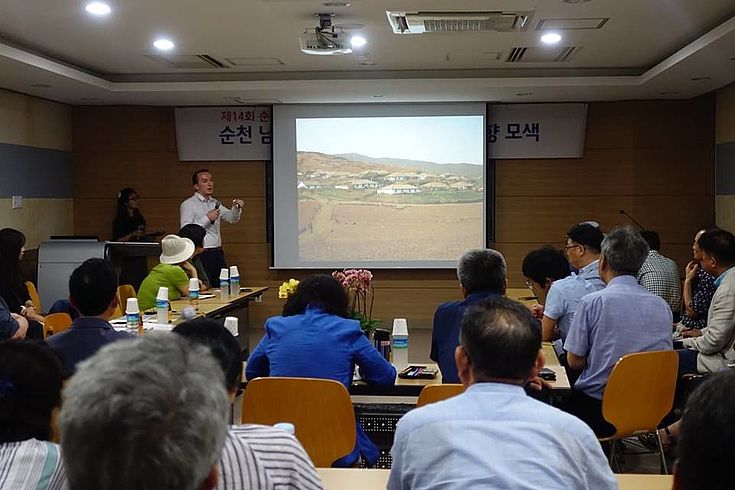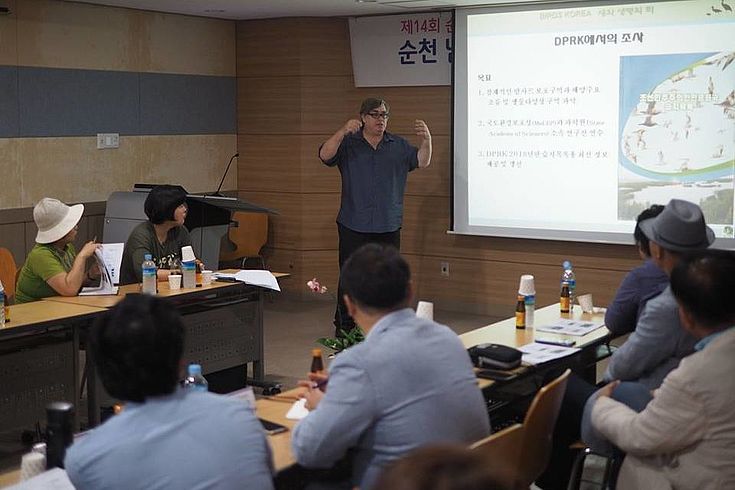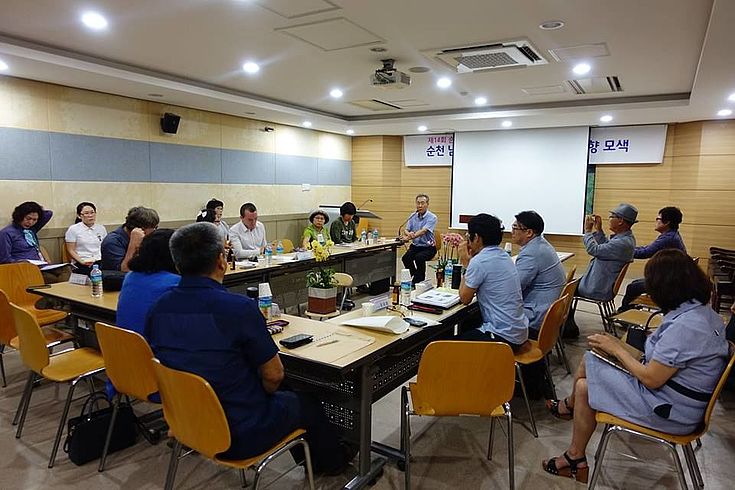Local Workshop
Environmental Exchange with North Korea and the Role of Suncheon Bay
Professor Park Ky Young of the Suncheon National University opens the event.
HSS
Suncheon Bay Eco-Talk
In 2006, Suncheon Bay Wetland Reserve was the first domestic coastal wetland in South Korea to be registered with the Ramsar Convention as a “Wetland of International Importance”. It is also home to the Ramsar Regional Centre - East Asia (RRC-EA), one of the regional initiatives formally recognized by the Ramsar Convention that is cooperating with HSF Korea on wetland conservation in North Korea. The RRC – EA also hosted the “Suncheon Bay Eco-Talk”. The event brought together local representatives involved in wetland conservation in Suncheon and beyond, as well as actors that are involved in wetland conservation in North Korea. Professor Park Ky Young of Suncheon National University opened the event with her welcoming remarks referring to the Summit between the South Korean President Moon Jae-In and the North Korea leader Kim Jong-Un and the current discussions on the national level for a cooperation on environment conservation. Cho Young-Ik, the Manager of Suncheon Bay Preservation Department, welcomed all participants on behalf of Suncheon City government.
Felix Glenk, Project Manager for North Korea at HSF Korea, spoke about the work of international actors on environmental protection in North Korea in recent years.
HSS
Presentations by Felix Glenk and Dr. Nial Moores
Presentations by Dr. Nial Moores, Founder and Director of Birds Korea, and Felix Glenk, Project Manager for North Korea of HSF Korea, intended to share the work of international actors on environment conservation in North Korea over the last years. Felix Glenk introduced the work of HSF, the project on reforestation as a model case and the efforts to conserve wetlands in North Korea with the goal to promote international cooperation that eventually led to the accession of North Korea to the Ramsar Convention and the East- Asian Australasian Flyway Partnership as well as to the membership of North Korea´s Ministry of Land and Environment Protection to IUCN (International Union for the Conservation of Nature).
Dr. Nial Moores presented in detail the activities in North Korea for the conservation of Ramsar areas and bird habitats in North Korea.
HSS
Studies on bird species
Dr. Nial Moores unveiled in detail the activities in North Korea on the conservation of Ramsar Sites and bird habitats in North Korea. He referred to a total of 9 bird and wetland surveys in North Korea between 2014 and 2018 that Birds Korea with the support of HSF Korea conducted. Dr Moores also introduced in detail different wetlands in North Korea, as well as current challenges and the results of the research in North Korea with 414 identified bird species of which 158 are conservation priorities. Both speakers also presented various ideas for cooperation and exchange on the Korean Peninsula. The presentations were followed by a discussion with local stakeholders of Suncheon Bay. Subsequently, Dr Kim In Chol of the Korean Federation of Environment Movements introduced the characteristics of Suncheon Bay and the process that led to the designation of Suncheon Bay as a Ramsar Site and the efforts to conserve biodiversity at the site.
Dr. Yang Chae Yeol led the discussions.
HSS
Discussion
Finally, Dr. Jang Chae Yeol chaired the discussions among all participants and speakers to develop ideas and suggestions for an involvement of Suncheon Bay regarding a rapprochement of South and North Korea. A main focus of the discussions was a potential cooperation between Suncheon Bay Wetland Reserve, the first coastal Ramsar Site designated in South Korea and Mundok Migratory Bird Reserve, the first Ramsar Site in North Korea.




